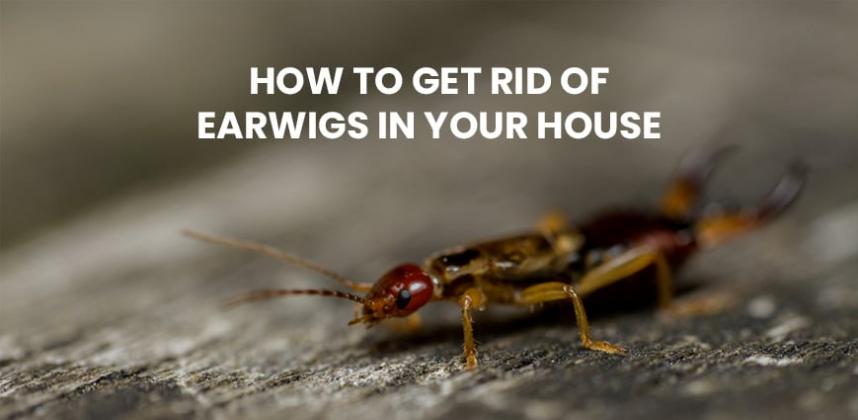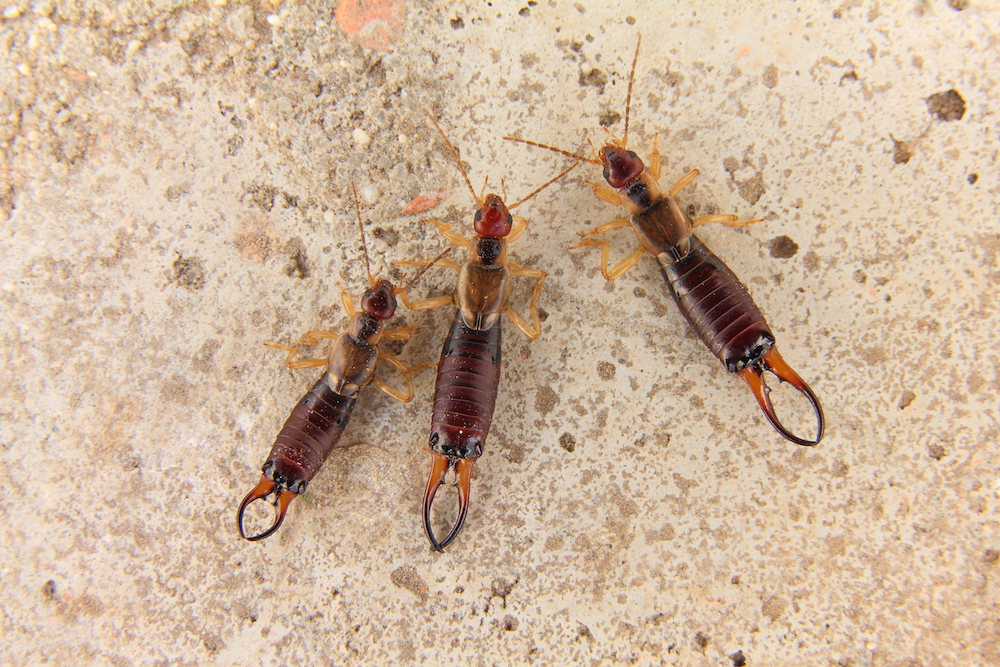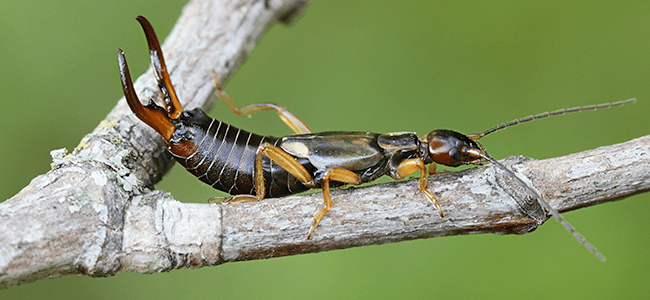Table Of Content

Most earwigs are attracted to light, so it’s possible you find many of them at night surrounding a bright porch light. Earwigs are typically omnivores that will feed on plant life, other insects, pollens, and lichens. Earwigs can create havoc in gardens due to their preferred food source of plants and flowers. They will feed on soft foods and fruits such apricots, vegetables, plants, and even some flowers. While earwigs use their pincers to hunt arthropods, they are very much a scavenger insect themselves.

Earwig Pincers
Clearing away dead leaves and other yard detritus can keep those pests at bay. If you find them on your plants, you can combine warm water with a few drops of dish soap, then spray the soapy mixture directly on the plants. Despite the fierce look of their pincers, earwigs are not insects bent on destruction. They are hungry, but despite their name, they won’t feast on your hair or your ears like other invasive pests.
Use a soap and water solution
Along with their pincers, they have 6 legs, two long antennae that protrude from the top of their head and two pairs of wings, which often hide under a thick cover. Even though most species of earwigs have wings, they often do not use the ability to fly, and generally resort to their legs for getting from point A to point B. The ecological scavengers of the insect world, earwigs clean homes and gardens everywhere, feasting on dead and decaying plant life and insects.
Signs of Earwig Damage
During dry weather, sprinkle food-grade diatomaceous earth in areas of your garden where you suspect earwig activity. As the bugs pass through the white powder, it destroys their protective covering, and they eventually dry out and die. A vegetable oil and soy sauce trap can help eliminate pincher bugs from your yard. The aroma of soy sauce lures the tiny creatures to the trap, and the oil mixture prevents them from escaping. Although earwigs often get into houses, they don’t damage property.
These insects gravitate to bathroom cabinets with leaks or condensation in basements. Consider an all-natural control method or a professional pest control service. This is best used in dry soil, as it is not as effective when wet. Sprinkle this substance—which can be used to combat other insects like ants—around the base of plants or anywhere else you see earwigs. If it’s near anything that could be consumed, use food-grade DE that is free of other toxic pesticides.
Orkin Pros are trained to help get rid of earwigs and similar pests that invade homes. Since every yard or home is unique, the Orkin Pro will design an earwig treatment program for your situation. Earwigs do not have a stinger of any sort and thus do not carry venom. And contrary to an old wives’ tale, there is no additional risk of earwigs crawling into one’s ear.
They aren’t aggressive and generally don’t stick with a family of earwigs. Earwigs are nocturnal, creepy-looking pests with a false reputation for being insects that will burrow into people's ears and lay eggs, but they don't. Instead, earwigs in the house are an indicator that your home is a moist, protected environment for them. They can damage plants and cause minor irritation when they pinch, but overall, they are beneficial to the ecosystem. Earwigs like damp, shady areas, so be sure to cut back any overgrown trees and bushes.
Create a DIY soy sauce / oil pit trap
When you notice an infestation of earwigs in your garden, you should try to rid of them before they become very destructive to your plants. There are several methods of killing earwigs, such as using pesticides, traps and some natural methods. Although your warm home isn’t ideal for earwigs, there’s certainly a chance that they can enter your home without you noticing. Earwigs can crawl through cracks, gaps and holes, so checking poorly sealed doors and windows, unscreened vents and doors leading into crawl spaces is essential. Plus, since they are attracted to light, they can also be drawn from their outside habitats to indoors. If you’re gearing up for battle against an earwig infestation, you’ll be happy to know that all-natural methods are incredibly effective.
Inverness mum brought to tears every night with earwig infestation - Inverness Courier
Inverness mum brought to tears every night with earwig infestation.
Posted: Mon, 02 Oct 2023 07:00:00 GMT [source]
You can find one near you with the helpful zip code search below. Contrary to European folklore, earwigs are not scary bugs that crawl into ears and eat peoples’ brains at night. When startled or uncovered, earwigs will quickly move and run away. They can be found living together outdoors in large numbers, usually congregating under piles of lawn debris, mulch or in tree holes. This is a habit that scientists believe is caused by a pheromone produced by these insects.
Earwigs usually use their pincers to ward off enemies like toads and birds, or—in some species—to catch prey. If earwigs are overwhelming your home in large numbers and repeated attempts to get rid of them are not working, hire an exterminator. Exterminators will investigate and find the source of the pest infestation. They are licensed to use chemical controls to get rid of the problem. As earwigs are nocturnal, the best time to search for them is at night.
She currently lives in London with her antique typewriter and an expansive collection of houseplants. As with any pest problem, if none of the above tips work, or you have an infestation, it’s always best to call in the professionals. They will be best equipped to help with the solution, and carry out necessary treatments. Much like silverfish, earwigs thrive in damp and moist conditions.
Watch out for their defense mechanism—emitting a malodorous rotten smell when frightened. Earwigs use cerci in various ways, including hunting, defense, and courting. Males have more curved cerci, whereas females have more straight or sometimes crossed cerci that they use to defend their egg nests from predators. Flying earwigs also use their cerci to assist in folding and unfolding their wings.
The female carry around their eggs until they find an adequate location to lay them in what is called a cell. This location is typically burrowed into a spot under leaves, in soil, or in a crevice. The female earwig can lay anywhere from eggs and can even brood twice in a season. Female earwigs are quite rare in the insect world in that they are one of the few bugs that take care of their eggs. While there are many different species of earwigs, they generally maintain quite similar life cycles and body structure. They struggle in colder environments, which is why you will typically find earwigs in warmer climates.

"Neither the eggs nor immature nymphs can withstand the long periods of dryness. This may cause them to seek shelters elsewhere." Earwigs may look like pure nightmare fuel, with those creepy pincers on their tail and the fast, scuttling run they do when they're found. We are no longer supporting IE (Internet Explorer) as we strive to provide site experiences for browsers that support new web standards and security practices. Once you have you removed all the earwigs found in and around your home, make sure that they don’t come back. Here are some tips to prevent earwigs from returning to your premise.
Also, check drain pipes to ensure they effectively direct water away from your property rather than allowing it to pool near the foundations. Earwigs tend to stick around if they have a food source and can find damp corners. Therefore, you can get rid of the annoying creepy crawlies by ensuring there are no leaking pipes in your home.
You will often find them active at night-time indoors during July and August. The good news is that they don’t bite people or feed on foodstuffs. However, the foul stench they sometimes give off is a sign of earwigs in the house.




















